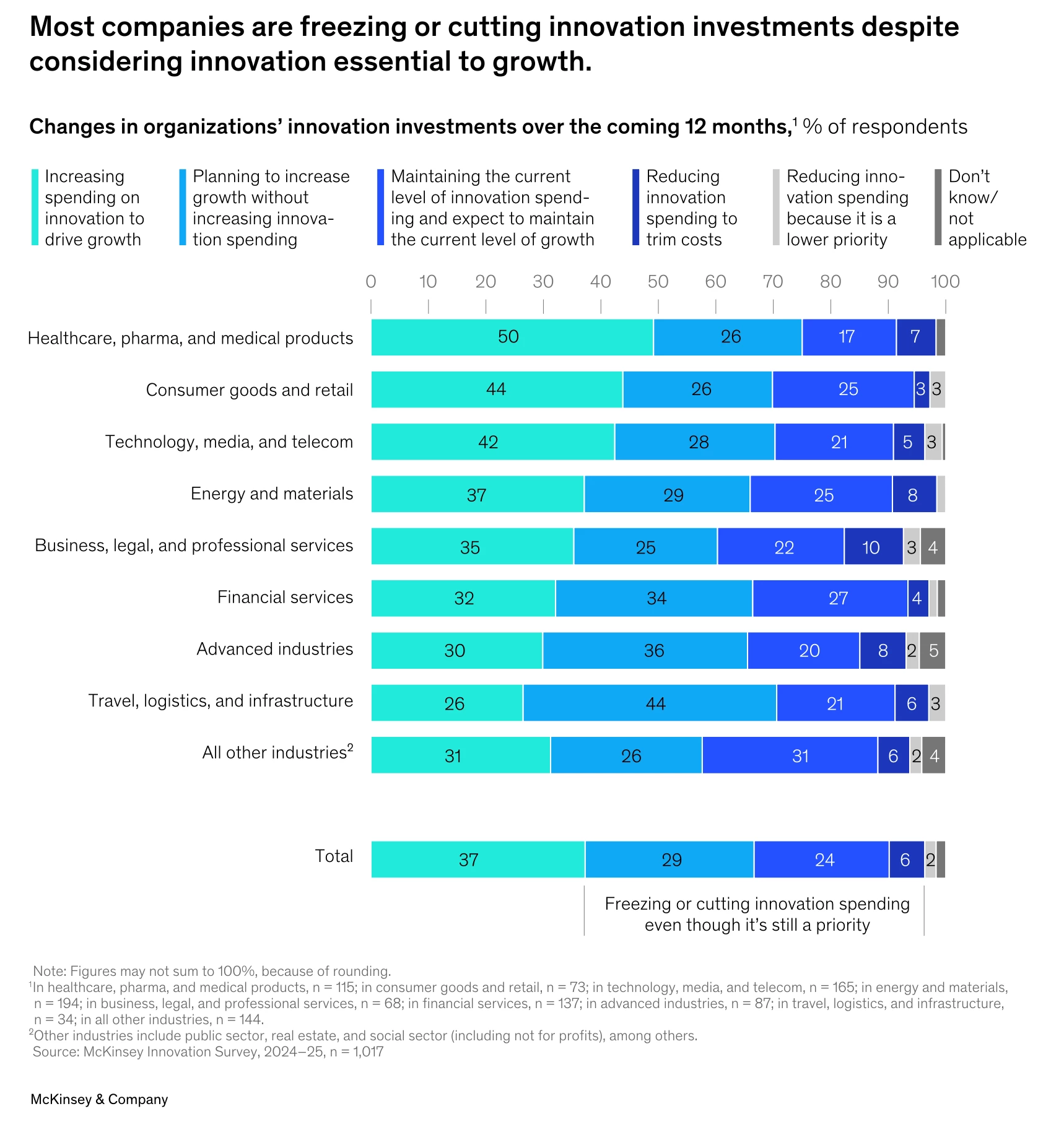
The stock market just had its collective coffee spilled faster than a stormtrooper falling off a speeder bike. Why? MIT researchers dropped a truth bomb that sent shockwaves through Wall Street: 95% of generative AI initiatives are failing to deliver measurable ROI. Not that this hasn’t been reported before, but this time around, the report finally caught the attention of Wall Street and the media, giving it its viral TikTok moment.
But here’s the plot twist that should keep C-suite executives up at night: it’s not the technology that’s broken. It’s how we’re wielding it.
Read on to get my take on what all of this actually means and the challenges we face.
What MIT actually found
MIT’s NANDA initiative didn’t just conduct another “AI is amazing” study. They rolled up their sleeves, interviewed 150 enterprise leaders, surveyed 350 employees, and analyzed 300 public AI deployments. The findings? About as sobering as discovering the Death Star plans were incomplete.
Despite companies investing between $35–40 billion in GenAI initiatives, only 5% are achieving rapid revenue acceleration. The rest are stuck in pilot purgatory, burning through budgets.
According to MIT’s NANDA initiative, a whopping 95% of enterprise organizations saw zero return on their generative AI pilots—meaning only 5% actually scaled tools into production successfully. These findings are based on 52 structured interviews with enterprise leaders, analysis of over 300 AI initiatives, and a survey covering 153 business professionals. And the investments behind these failing pilots are staggering—U.S. companies have poured between $35 and $40 billion into GenAI initiatives with almost nothing to show for it.
But before you start thinking this is another “AI is overhyped” story, pump the brakes. This misinterpreted report reveals something far more nuanced—and actionable.
The media’s AI translation problem
Here’s where the story gets interesting—and, frankly, a bit frustrating. The media grabbed this MIT report and ran with it like Forrest Gump, but they missed a crucial detail: this study focused specifically on generative AI, not all AI implementations.
The nuance lies buried in the headlines: the failure isn’t about AI itself—it’s about execution. MIT’s NANDA researchers highlight infrastructure gaps, data retention issues, and a lack of adaptive learning—not glamorous ‘AI hype’—as the real barriers to success.
Worse, many outlets leaned into alarmism, packaging the 95% figure as a near-total AI collapse—calling to mind clickbait over context. This not only distorts the conversation but also tricks decision-makers into thinking the problem is ‘AI doesn’t work,’ when the reality is ‘AI pilots are being rolled out without the right foundations.’
The headlines screamed, “95% of AI fails!” when the reality is “95% of GenAI pilot programs struggle with enterprise integration.” That’s like saying the Millennium Falcon is broken when, really, you just need to hit the hyperdrive motivator in the right spot. And then you can easily make the Kessel Run in 12 parsecs.
Successful AI implementations are everywhere, from Netflix recommendations that keep you binge-watching to fraud detection systems protecting your credit cards. The issue isn’t AI capability; it’s enterprise adoption strategy.
Why most companies are struggling to use AI effectively
The MIT research uncovered a fascinating pattern. While startups led by 20-something founders are seeing revenues jump from zero to $20 million in a year, established enterprises are stumbling harder than C-3PO in a sandstorm.
The core problem? The “learning gap.”
Most companies are approaching AI like they’re buying traditional software: expecting plug-and-play solutions that magically understand their business context. But GenAI tools need to learn, adapt, and evolve with organizational workflows. Generic tools like ChatGPT work brilliantly for individuals thanks to their flexibility, but they stall in enterprise environments where they can’t retain organizational knowledge or adapt to specific processes.
The resource allocation disaster
Here’s where things get really interesting. Companies are throwing money at the wrong problems faster than the Joker lighting his match to burn the mob’s money.
More than half of GenAI budgets go to sales and marketing tools, yet MIT found the biggest ROI opportunities lie in back-office automation—eliminating business process outsourcing, cutting external agency costs, and streamlining operations.
Luckily, as confirmed by a recent McKinsey article, the turnaround is already happening and enterprises are shifting towards spending on true transformation and not just feeling better about their FOLO (Fear Of Looming Obsolescence).

The success stories: When AI actually works
The ones getting it right share some common traits that read like a Jedi training manual:
- Focus on one pain point: Successful startups don’t try to boil the ocean. They identify one specific problem, solve it exceptionally well, and build from there.
- Smart partnerships: Rather than building everything in-house, winners partner with specialized AI vendors. The research shows purchased solutions succeed about 67% of the time, while internal builds succeed only one-third as often.
- Front-line empowerment: Instead of centralizing AI in some ivory tower lab, successful companies empower line managers to drive adoption where the real work happens.
The future belongs to the strategically minded
The MIT report points toward something fascinating on the horizon: agentic AI systems that can learn, remember, and act independently within defined boundaries. But getting there requires the foundation that companies like ABBYY have been building for years.
Process intelligence as your navigator:
Before deploying any AI, you need to understand your current processes. ABBYY provides this crucial visibility, helping identify where automation delivers maximum impact.
Purpose-built AI over generic tools:
While ChatGPT is great for brainstorming, business-critical processes need specialized tools designed for reliability, compliance, and continuous learning.
Data-centric approach:
The most successful AI implementations start with clean, structured data. IDP provides this foundation, ensuring your AI initiatives build on solid ground rather than shifting sand.
Consider this real-world example: A fast-food retailer needed to extract 350+ fields from lease documents in multiple languages and formats. Instead of throwing a generic AI tool at the problem, they leveraged ABBYY, achieving 82% accuracy, while creating a learning system that improves over time and reduces the FTE costs from 30 to 5.
Chart your course
The MIT research doesn’t spell doom for AI—it provides a roadmap for success. Companies need to stop treating AI like a magic wand and start approaching it as a strategic capability that requires proper foundation, training, and integration.
The 5% succeeding aren’t lucky; they’re strategic. They understand that AI transformation isn’t about deploying the latest shiny tool; it’s about solving real business problems with the right combination of technology, process optimization, and human insight.
So before you write off AI as overhyped, know this: History doesn’t remember the 95% that fumbled. It remembers the 5% who turned AI into ROI. Choose which script you want your business written into.






